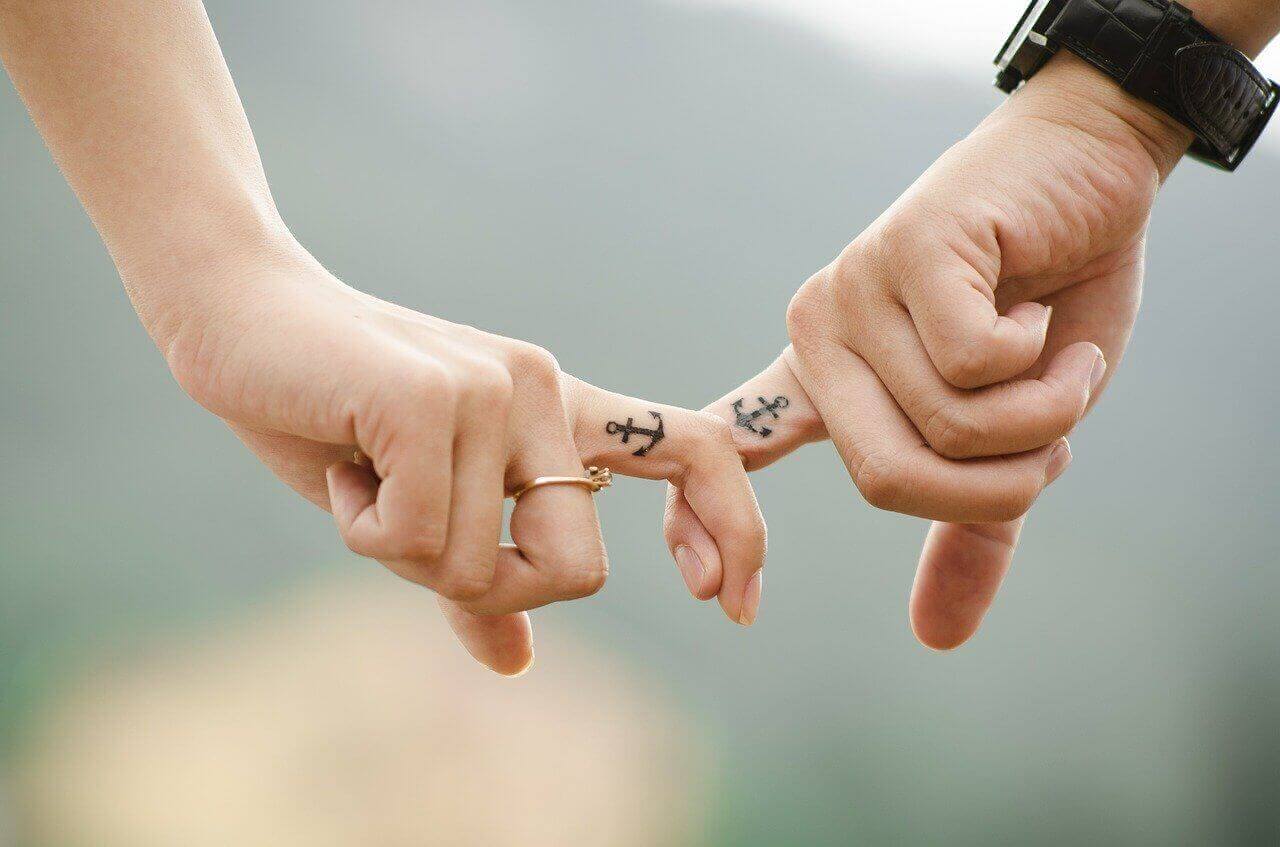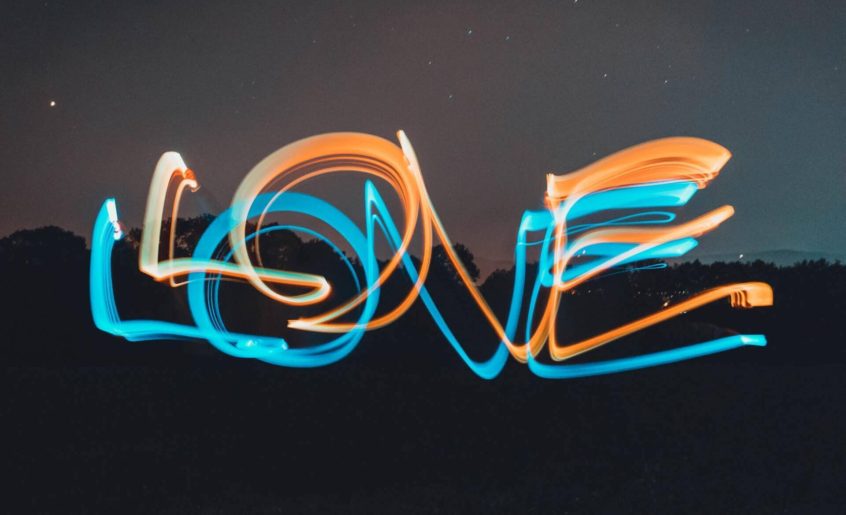So, why do we do it? What does falling in love mean from a scientific point of view? This we might be able to answer. Why do people fall in love with one person rather than another? That we don’t know for sure, and it might always remain the greatest mystery of all.
Naturally, scientists and psychologists have pointed out that people are attracted to other people who share their same values, intelligence, core opinions, and background. A good answer, but is that all?
Of course, there are also John Money’s “love maps”. This theory states that based on our childhood experiences, we might create mental pictures of the ideal mate. Of course at 2halvesofasoul, as couple therapists, we’re always asked what brings couples together and what is our view on attraction and love. Here’s how Imago Relationship Therapy “answers” this question.
Why do we fall in love – The Imago view
Imago Relationship Therapy is one important type of couples therapy. It originates from the Latin imago, which means “image”. This image is buried deep inside the unconscious folds of our minds and tells us of a “perfect” partner. The image is made up of countless of other pictures and sounds and smells we gather while growing up. This is why, the model of our “perfect partner” is based upon the image of our primary caregivers, the people we’ve spent the most time with, in our childhood, whether they’re friends or family.
This image is also made of all the books, songs, or movies we watch and listen to when growing up. We talk of all these pictures, sounds, and smells and we store them within ourselves. Combined with our genetics, and developing personality, the image of that “perfect partner” is born.

This image does not contain only good qualities, but also the negatives, the good and the bad we’ve absorbed as children. So, when life brings us close to this person that externalizes the internal image we’ve constructed, our radar goes up, and we fall in love, and go through all the stages of love, from the romantic to the honeymoon stage, but we’ll discuss the stages of love in the following.
Of course, there are a lot of other theories now. Depending on how hard you search for them, you will also find a lot of questionnaires on how you fall in love depending on your personality, values, etc. Still, those are not satisfactory either, but what is? That we fall in love with someone because we like their genes? That’s another valid point, yes.
Yet, in our quest for love, we have sung so many songs, written so many poems and novels, and still seem to be so far away from understanding this beautiful enigma wrapped up in a mystery, that love is.
The three phases of falling in love
Biological anthropologist, Helen Fisher, has developed the theory of falling in love in three phases. First, there is the sexual drive, then the feelings of intense romantic love followed by the long-term feelings of deep attachment.
So, can we say there are three phases of falling in love corresponding to three different hormones that are involved at each stage? We could try. Let’s see.
Biochemistry plays a major part in how we fall in love, and according to a Helen Fisher, a researcher from Rutgers University in New Jersey, we fall in love in three stages, corresponding to three different chemicals in our bodies.
- Lust – influenced by testosterone and estrogen hormones.
- Attraction – this is when love strikes. Usually, when people fall in love that’s all they think about. They could spend days on end daydreaming about their next encounter. In this attraction phase, the “monoamines”, a group of neurotransmitters come into play. You might have heard of them. It’s the dopamine, the norepinephrine (aka adrenaline), and the serotonin (maybe love’s most important chemical).
- Attachment – this is the “real relationship” phase, where people make long-lasting commitments towards each other. A couple cannot stay in the attraction stage forever, as they might never get anything done at all!
For this last stage, we have to thank two important hormones released by the nervous system, which play crucial roles in many of our social attachments:
- Oxytocin –is released by the hypothalamus during childbirth. It is what binds mother and child together. It also supports bonding between two adults when they get intimate. It is basically what keeps us together.
- Vasopressin – it usually regulates the tonicity of body fluids, but research has shown that it may also influence pair-bonding.
Who do we fall in love with? Do we have a “type”?
We are usually attracted to like-minded people, we make friends with them, and sometimes end up making a life together. According to one study analysing the similarities of individual personality traits, done on 1,523 couples, happy couples’ personalities synced 86% of the time.
Apart from personality traits, there are also the beliefs and values that guide our lives. This is our brain steering us in the direction of people who are similar to us and easy to understand and predict. Nevertheless, there is a fine line here.
We will often crave novelty and difference, maybe a little bit of risk. We are attracted to like-minded people who still have some qualities that we don’t have but would like to. This is some sort of a Goldilocks strategy, where we are attracted by people similar to us, but also different in certain aspects.

And then there is the physical appearance aspect…
Beauty might be in the eye of the beholder, but so is love in the heart of the lover. It seems appearance also has a say on whom we are attracted to, even if on a subconscious level.
For example, in women, a symmetric face is considered more attractive, and a sign of “good genes”, while in men, a longer ring finger in comparison to the index finger might point out to increased fertility and better genes. Nevertheless, what and who we find attractive is also strongly influenced by our life experiences, faces we’ve been exposed to, and background.
If you’ve grown up with a certain person and you’ve had a very good relationship with that person, then his/her facial characteristics might signal positivity to you and you might grow up to find attractive people with similar facial expressions. We might find attractive those faces that are similar to the ones we’ve grown up with.
Falling in love as described in love poems and songs
Love is also the noblest of ideas in the world’s panoply of thoughts. We “fall” in love when we let go of reality for some time and get transported to another “perfect world” where we can experience the true idea of togetherness. This is the main theme we find in most love songs and love poems.
Take the famous “West Side Story” 1956 musical. In the song “Somewhere” the lovers are longing for that ideal state and place where “we’ll find a new way of living/ We’ll find a way of forgiving/ Somewhere// There’s a place for us/ A time and place for us”.
Literature, history, morality tell us stories of how us humans are born with unconditional loving instincts, voiced by our conscience. Love is woven in the ideal Garden of Eden we’ve fallen out of, and thus stands at the very core of our existence, and yearnings. On an ideational level, love is the ultimate goal we shall all aspire to, is the fabric that holds the world together.
These ideas, legends, myths, innate aspirations are part of our culture and have been ingrained in our personality that they inspire us to seek for love, and cherish it when we find it.
So, love is not only that beautiful, mad feeling we feel towards another person, it is also an ideal place we all aspire to.
Does love last? How do you keep it?
As with anything beautiful, amazing in our lives, we are soon riddled with the fear that it won’t last, as all things come to pass in our world. Nevertheless, love can be learned, studied, nurtured, translated into words, and deeds. Although that initial ultimate yearning from poems will always remain and you will sometimes feel that the daily chores tarnish that “perfect love”, you need to roll up your sleeves and work for it, work for love.

As we tell all our couples in therapy, daily, “earthly” steps need to be taken to preserve your love and cooperation. It starts with dialogue and respect, building on friendship, goals, and intimacy. If you feel you’re in a place where dialogue is hard, you can start with a session of couples therapy.
You should always try to know yourselves. Know each other’s needs, desires, and limits. Learn what bothers you and how to resolve your possible conflicts. Be honest with each other, and don’t hide your deepest needs or fears from each other. Talk about your expectations, goals. Respect yourselves and your significant other. Respect your shared intimacy as it is essential to your relationship. As much as intimacy helps release oxytocin and improves bonding, we must never forget about boundaries and personal space.
These are not just beautiful words and ideal advice. They’re a reality we discuss with most of our couples in therapy. Love can never die. Love rewrites itself and it takes two halves of a soul to do that.
Images source: Unsplash


